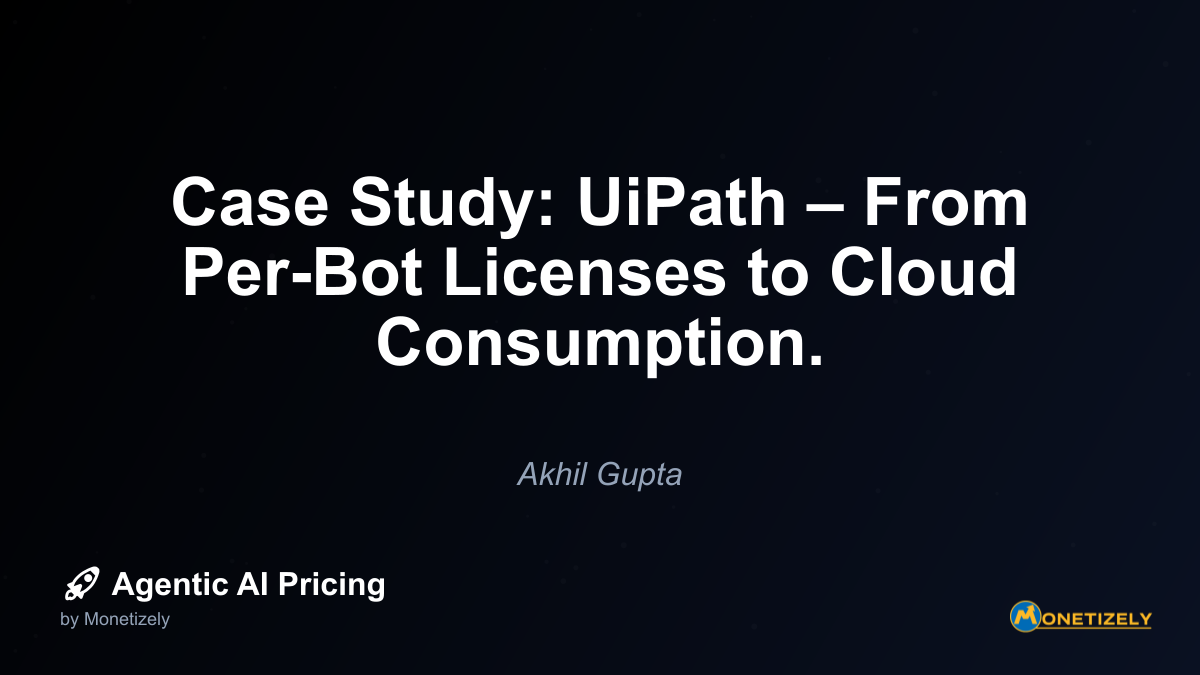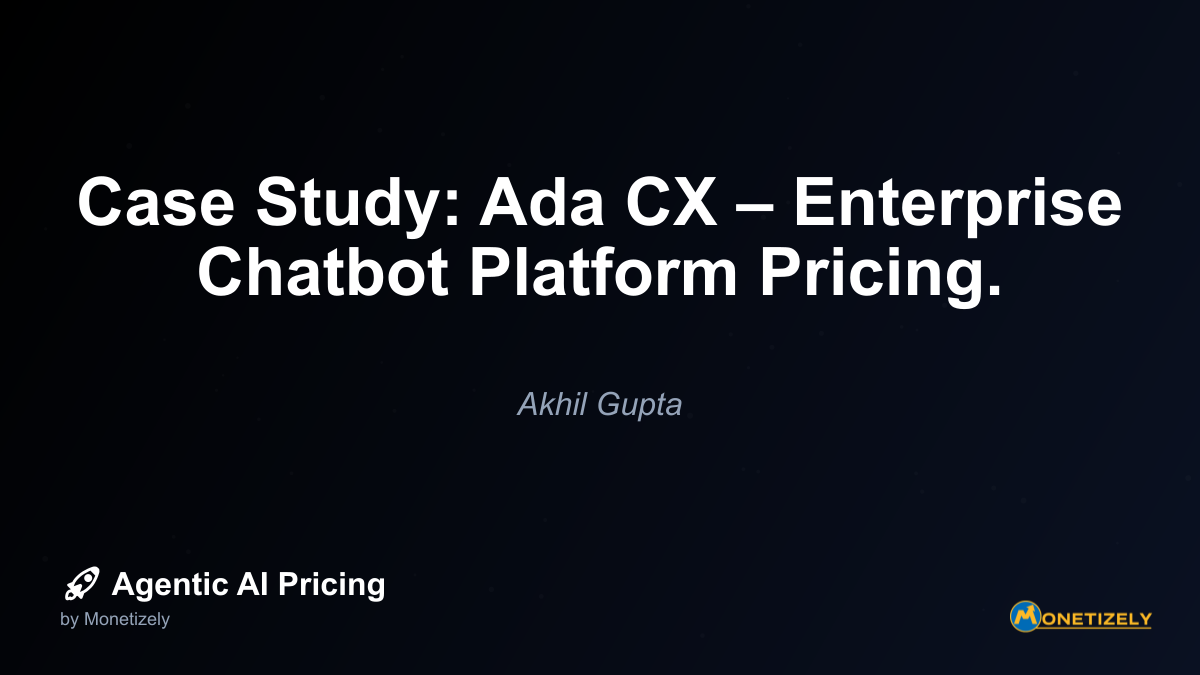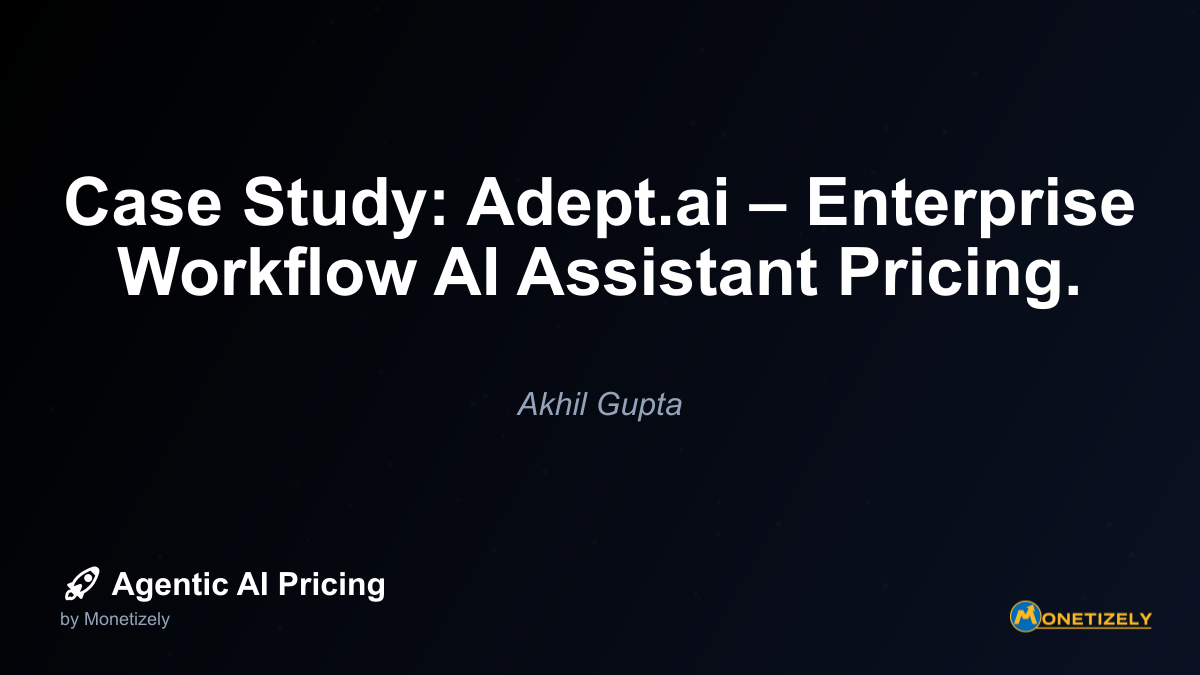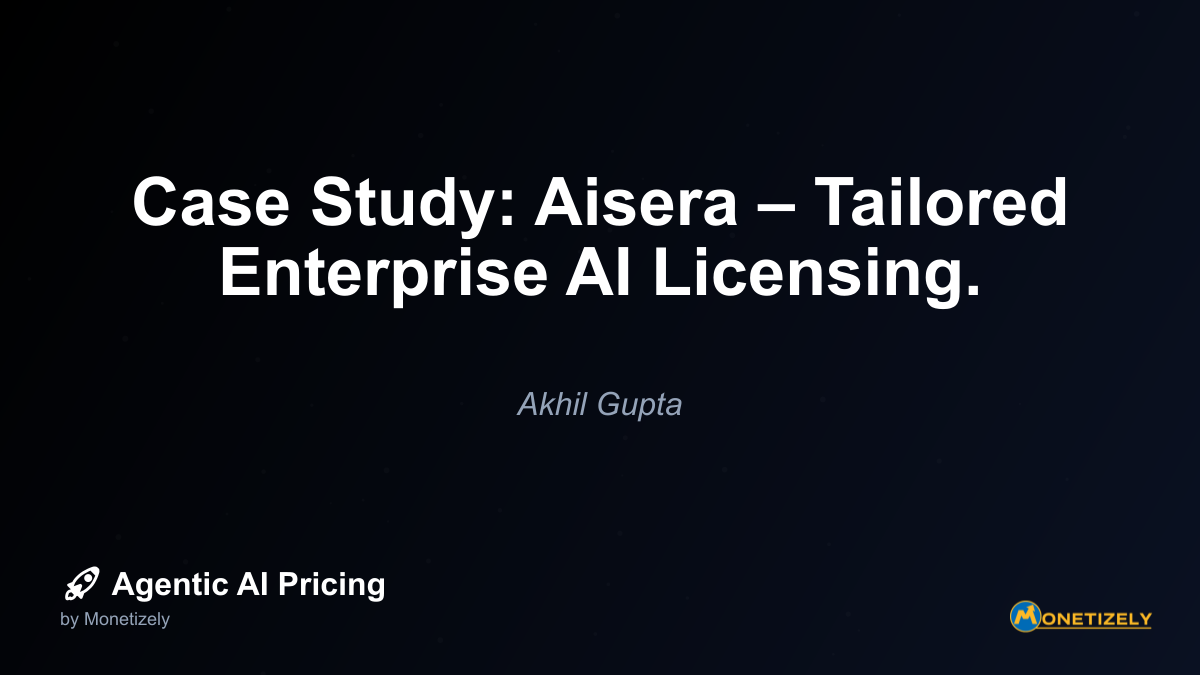· Akhil Gupta · Case Studies · 5 min read
Case Study: UiPath – From Per-Bot Licenses to Cloud Consumption.
AI and SaaS Pricing Masterclass
Learn the art of strategic pricing directly from industry experts. Our comprehensive course provides frameworks and methodologies for optimizing your pricing strategy in the evolving AI landscape. Earn a professional certification that can be imported directly to your LinkedIn profile.

Adaptive Execution Patterns
AI-enabled robots in UiPath’s ecosystem now demonstrate adaptive execution patterns that further complicate traditional capacity planning:
- Dynamic resource allocation: Robots can now adjust their CPU, memory, and network utilization based on the complexity of tasks encountered
- Intelligent workload distribution: Orchestration systems can dynamically allocate work across available resources based on priority and complexity
- Learning-based optimization: Systems can improve efficiency over time, potentially reducing resource consumption for recurring tasks
These capabilities create scenarios where the same process might consume significantly different resources depending on the specific inputs and conditions—a reality that consumption-based pricing accommodates more naturally than fixed licensing.
Strategic Business Implications for UiPath
UiPath’s pricing evolution carries significant strategic implications for both the company and the broader RPA market:
Revenue Model Transformation
The shift toward consumption-based pricing fundamentally changes UiPath’s revenue patterns. While traditional licensing provided predictable annual recurring revenue, consumption models introduce greater variability but potentially higher lifetime customer value as usage expands.
For UiPath, this transition requires careful financial management during the transformation period, as revenue recognition patterns shift from predictable annual contracts to variable consumption streams. Investors and analysts are closely monitoring this transition for signals about long-term growth prospects.
Customer Relationship Evolution
The consumption model also transforms UiPath’s customer relationships in significant ways:
- Continuous value demonstration: Rather than annual renewal discussions, UiPath must continuously demonstrate value to maintain or grow consumption
- Usage optimization partnerships: Customer success teams now focus on helping customers optimize consumption rather than simply ensuring technical adoption
- Expansion opportunity identification: Analytics around consumption patterns reveal opportunities to suggest additional automation use cases
As one UiPath executive noted in a recent industry panel: “We’re no longer selling licenses; we’re selling outcomes. Our success is now directly tied to our customers realizing value from every automation hour they consume.”
Platform Strategy Reinforcement
The consumption model reinforces UiPath’s broader platform strategy by:
- Encouraging adoption across a wider range of processes without the friction of additional license purchases
- Creating natural upsell paths from basic automation to AI-enhanced capabilities
- Establishing clearer differentiation from point solution competitors with less flexible pricing models
Lessons for the Broader AI and Automation Market
UiPath’s pricing transformation offers valuable lessons for other companies navigating the evolution of AI-enabled software pricing:
1. Value Alignment is Paramount
The most successful pricing models align costs directly with the value customers receive. As automation capabilities become more sophisticated and dynamic, static licensing models increasingly fail this alignment test. Organizations should evaluate their pricing structures against the fundamental question: “Do customers pay more when they receive more value?”
For deeper insights into aligning pricing with value in AI contexts, explore our comprehensive guide to RPA pricing models.
2. Transition Requires Careful Orchestration
UiPath’s approach demonstrates that transitioning pricing models requires careful orchestration across multiple business functions:
- Sales teams need new compensation structures and training
- Finance departments must adjust revenue forecasting and recognition
- Product teams must build consumption monitoring and reporting capabilities
- Customer success organizations need new metrics and engagement models
3. Hybrid Approaches Bridge Transitions
Rather than forcing a binary choice between traditional and consumption-based models, UiPath’s hybrid approach provides a transitional path that accommodates different customer readiness levels. This strategy acknowledges that pricing evolution occurs at different rates across customer segments and use cases.
4. Data Visibility Becomes Critical
Consumption-based models demand significantly more sophisticated usage tracking and analysis capabilities. Both vendors and customers need clear visibility into consumption patterns to effectively manage costs and identify optimization opportunities.
The Future of UiPath Pricing
Looking ahead, UiPath’s pricing model will likely continue to evolve along several dimensions:
Outcome-Based Components
The next frontier in UiPath’s pricing evolution may incorporate outcome-based elements that tie costs directly to business results rather than just resource consumption. Early experiments in this direction include:
- Success fees for automated processes that deliver measurable cost savings
- Performance-based pricing tiers where costs decrease as efficiency improves
- Risk-sharing models for transformational automation initiatives
Ecosystem Integration Pricing
As UiPath’s platform increasingly serves as an orchestration layer connecting multiple AI services and business applications, pricing may evolve to include:
- API transaction-based components for third-party service integration
- Data processing volume measurements for information flowing between systems
- Cross-platform orchestration credits that span multiple automation technologies
For those interested in how integration affects pricing strategies, our comprehensive guide to RPA SaaS pricing strategy provides valuable insights.
Industry-Specific Packaging
UiPath is likely to develop more industry-specific pricing packages that combine:
- Pre-built process templates for common industry workflows
- Industry-specific AI models and accelerators
- Compliance and governance frameworks tailored to regulatory requirements
- Outcome benchmarks based on industry performance data
Conclusion: The Broader Significance of UiPath’s Pricing Evolution
UiPath’s transition from per-bot licensing to cloud consumption illustrates a broader pattern unfolding across the enterprise software landscape. As artificial intelligence transforms software from static tools to dynamic, learning systems, pricing models must evolve to reflect this fundamental shift in how value is created and delivered.
For organizations deploying automation and AI technologies, this evolution demands more sophisticated approaches to cost management, value measurement, and vendor selection. The ability to accurately forecast consumption, attribute costs to specific business outcomes, and optimize resource utilization becomes a critical competency.
For technology vendors, UiPath’s journey highlights both the challenges and opportunities of pricing transformation. While the transition period introduces revenue predictability challenges, consumption-based models ultimately create stronger alignment between vendor success and customer outcomes—a foundation for sustainable growth in the AI-driven future.
As automation and AI capabilities continue to advance, the companies that thrive will be those that develop pricing approaches that scale naturally with the value they deliver, creating virtuous cycles of innovation and adoption. UiPath’s evolution from selling robot licenses to enabling flexible automation consumption represents an important case study in this broader market transformation.
Co-Founder & COO
Akhil is an Engineering leader with over 16+ years of experience in building, managing and scaling web-scale, high throughput enterprise applications and teams. He has worked with and led technology teams at FabAlley, BuildSupply and Healthians. He is a graduate from Delhi College of Engineering and UC Berkeley certified CTO.
Pricing Strategy Audit
Let our experts analyze your current pricing strategy and identify opportunities for improvement. Our data-driven assessment will help you unlock untapped revenue potential and optimize your AI pricing approach.




